Impedance Reshaping Control Strategy for Improving Resonance Suppression Performance of a Series-Compensated Grid-Connected System
Abstract
1. Introduction
2. Modeling and Resonance Analysis of the SCGCS
2.1. The Broadband Impedance Model of the Inverter
2.2. Effect of Parameters on Stability
3. Impedance-Based Resonance Suppression Method
3.1. Phase-Locked Loop Impedance Reshaping
3.2. Current Loop Impedance Reshaping
4. Experimental Results
5. Conclusions
- (1)
- The SCGCS has similar power resonance problems as the traditional SG-based SCGCS. With the increase in SCL, power resonance will appear in the SCGCS. According to the established impedance model, the impedance of the inverter is inductive near the fundamental frequency. The impedance of the series-compensated network near fundamental frequency was capacitive, so it was prone to couple with the inverter, easily causing resonance. Additionally, with the increase in the SCL and the number of parallel inverters, the stability of the SCGCS worsens.
- (2)
- In order to suppress the power resonance of the SCGCS, an impedance reshaping control strategy is proposed and verified with experiments. The amplitude–frequency characteristics of the inverter impedance are changed through the PLL and the current loop impedance shaping. After the impedance reshaping, the SCGCS can maintain a sufficient phase margin, and the stable operation of the SCGCS is guaranteed.
- (3)
- The proposed impedance shaping control can be easily applied to other controllers to achieve a good resonance suppression effect, and no additional resonance suppression equipment is needed, which reduces equipment investment and power loss.
Author Contributions
Funding
Institutional Review Board Statement
Informed Consent Statement
Data Availability Statement
Conflicts of Interest
References
- Pyrgou, A.; Kylili, A.; Fokaides, P.A. The future of the Feed-in Tariff (FiT) scheme in Europe: The case of photovoltaics. Energy Policy 2016, 95, 94–102. [Google Scholar] [CrossRef]
- Clastres, C. Smart grids: Another step towards competition, energy security and climate change objectives. Energy Policy 2011, 39, 5399–5408. [Google Scholar] [CrossRef]
- Xie, X.; Liu, W.; Liu, H.; Du, Y.; Li, Y. A System-Wide Protection Against Unstable SSCI in Series-Compensated Wind Power Systems. IEEE Trans. Power Deliv. 2018, 33, 3095–3104. [Google Scholar] [CrossRef]
- Karunanayake, C.; Ravishankar, J.; Dong, Z.Y. Nonlinear SSR Damping Controller for DFIG Based Wind Generators Interfaced to Series Compensated Transmission Systems. IEEE Trans. Power Syst. 2020, 35, 1156–1165. [Google Scholar] [CrossRef]
- Li, G.; Chen, Y.; Luo, A.; Wang, H. An Enhancing Grid Stiffness Control Strategy of STATCOM/BESS for Damping Sub-Synchronous Resonance in Wind Farm Connected to Weak Grid. IEEE Trans. Ind. Inform. 2019, 16, 5835–5845. [Google Scholar] [CrossRef]
- Sun, J.; Li, M.; Zhang, Z.; Xu, T.; He, J.; Wang, H.; Li, G. State Grid Corporation of China; China Electric Power Research Institute Renewable energy transmission by HVDC across the continent: System challenges and opportunities. CSEE J. Power Energy Syst. 2017, 3, 353–364. [Google Scholar] [CrossRef]
- Sun, J. Small-Signal Methods for AC Distributed Power Systems—A Review. IEEE Trans. Power Electron. 2009, 24, 2545–2554. [Google Scholar]
- Miao, Z. Impedance-Model-Based SSR Analysis for Type 3 Wind Generator and Series-Compensated Network. IEEE Trans. Energy Convers. 2012, 27, 984–991. [Google Scholar] [CrossRef]
- Wen, B.; Boroyevich, D.; Burgos, R.; Mattavelli, P.; Shen, Z. Analysis of D-Q Small-Signal Impedance of Grid-Tied Inverters. IEEE Trans. Power Electron. 2016, 31, 675–687. [Google Scholar] [CrossRef]
- Fu, S.; Zhang, X.; Xu, D. Improved control method of grid-connected converter based on voltage perturbation compensation under weak grid conditions. In Proceedings of the 10th International Conference on Power Electronics and ECCE Asia (ICPE 2019—ECCE Asia), Busan, Korea, 27–30 May 2019; pp. 1–6. [Google Scholar]
- Shuai, Z.; Li, Y.; Wu, W.; Tu, C.; Luo, A.; Shen, J.Z. Divided DQ Small-Signal Model: A New Perspective for the Stability Analysis of Three-Phase Grid-Tied Inverters. IEEE Trans. Ind. Electron. 2019, 66, 6493–6504. [Google Scholar] [CrossRef]
- Cespedes, M.; Sun, J. Impedance Modeling and Analysis of Grid-Connected Voltage-Source Converters. IEEE Trans. Power Electron. 2014, 29, 1254–1261. [Google Scholar] [CrossRef]
- Rygg, A.; Molinas, M.; Zhang, C.; Cai, X. A Modified Sequence-Domain Impedance Definition and Its Equivalence to the dq-Domain Impedance Definition for the Stability Analysis of AC Power Electronic Systems. IEEE J. Emerg. Sel. Top. Power Electron. 2016, 4, 1383–1396. [Google Scholar] [CrossRef]
- Sadamoto, T.; Chakrabortty, A.; Ishizaki, T.; Imura, J.-I. Retrofit Control of Wind-Integrated Power Systems. IEEE Trans. Power Syst. 2017, 33, 2804–2815. [Google Scholar] [CrossRef]
- Moharana, A.; Varma, R.K.; Seethapathy, R. SSR Alleviation by STATCOM in Induction-Generator-Based Wind Farm Connected to Series Compensated Line. IEEE Trans. Sustain. Energy 2014, 5, 947–957. [Google Scholar] [CrossRef]
- Wang, L.; Truong, D.-N. Stability Enhancement of a Power System with a PMSG-Based and a DFIG-Based Offshore Wind Farm Using a SVC with an Adaptive-Network-Based Fuzzy Inference System. IEEE Trans. Ind. Electron. 2012, 60, 2799–2807. [Google Scholar] [CrossRef]
- Fan, L.; Miao, Z. Mitigating SSR Using DFIG-Based Wind Generation. IEEE Trans. Sustain. Energy 2012, 3, 349–358. [Google Scholar] [CrossRef]
- Wu, W.; Chen, Y.; Luo, A.; Zhou, L.; Zhou, X.; Yang, L.; Dong, Y.; Guerrero, J.M. A Virtual Inertia Control Strategy for DC Microgrids Analogized with Virtual Synchronous Machines. IEEE Trans. Ind. Electron. 2017, 64, 6005–6016. [Google Scholar] [CrossRef]
- Mohammadpour, H.A.; Santi, E. SSR Damping Controller Design and Optimal Placement in Rotor-Side and Grid-Side Converters of Series-Compensated DFIG-Based Wind Farm. IEEE Trans. Sustain. Energy 2015, 6, 388–399. [Google Scholar] [CrossRef]
- Huang, P.-H.; El Moursi, M.S.; Xiao, W.; Kirtley, J.L. Subsynchronous Resonance Mitigation for Series-Compensated DFIG-Based Wind Farm by Using Two-Degree-of-Freedom Control Strategy. IEEE Trans. Power Syst. 2014, 30, 1442–1454. [Google Scholar] [CrossRef]
- Li, G.; Chen, Y.; Luo, A.; He, Z.; Wang, H.; Zhu, Z.; Wu, W.; Zhou, L. Analysis and Mitigation of Subsynchronous Resonance in Series-Compensated Grid-Connected System Controlled by a Virtual Synchronous Generator. IEEE Trans. Power Electron. 2020, 35, 11096–11107. [Google Scholar] [CrossRef]
- Xie, Z.; Wu, W.; Chen, Y.; Gong, W. Admittance-Based Stability Comparative Analysis of Grid-Connected Inverters with Direct Power Control and Closed-Loop Current Control. IEEE Trans. Ind. Electron. 2021. [Google Scholar] [CrossRef]
- Wang, X.; Blaabjerg, F. Harmonic Stability in Power Electronic-Based Power Systems: Concept, Modeling, and Analysis. IEEE Trans. Smart Grid 2019, 10, 2858–2870. [Google Scholar] [CrossRef]
- Zhang, C.; Cai, X.; Rygg, A.; Molinas, M. Sequence Domain SISO Equivalent Models of a Grid-Tied Voltage Source Converter System for Small-Signal Stability Analysis. IEEE Trans. Energy Convers. 2017, 33, 741–749. [Google Scholar] [CrossRef]

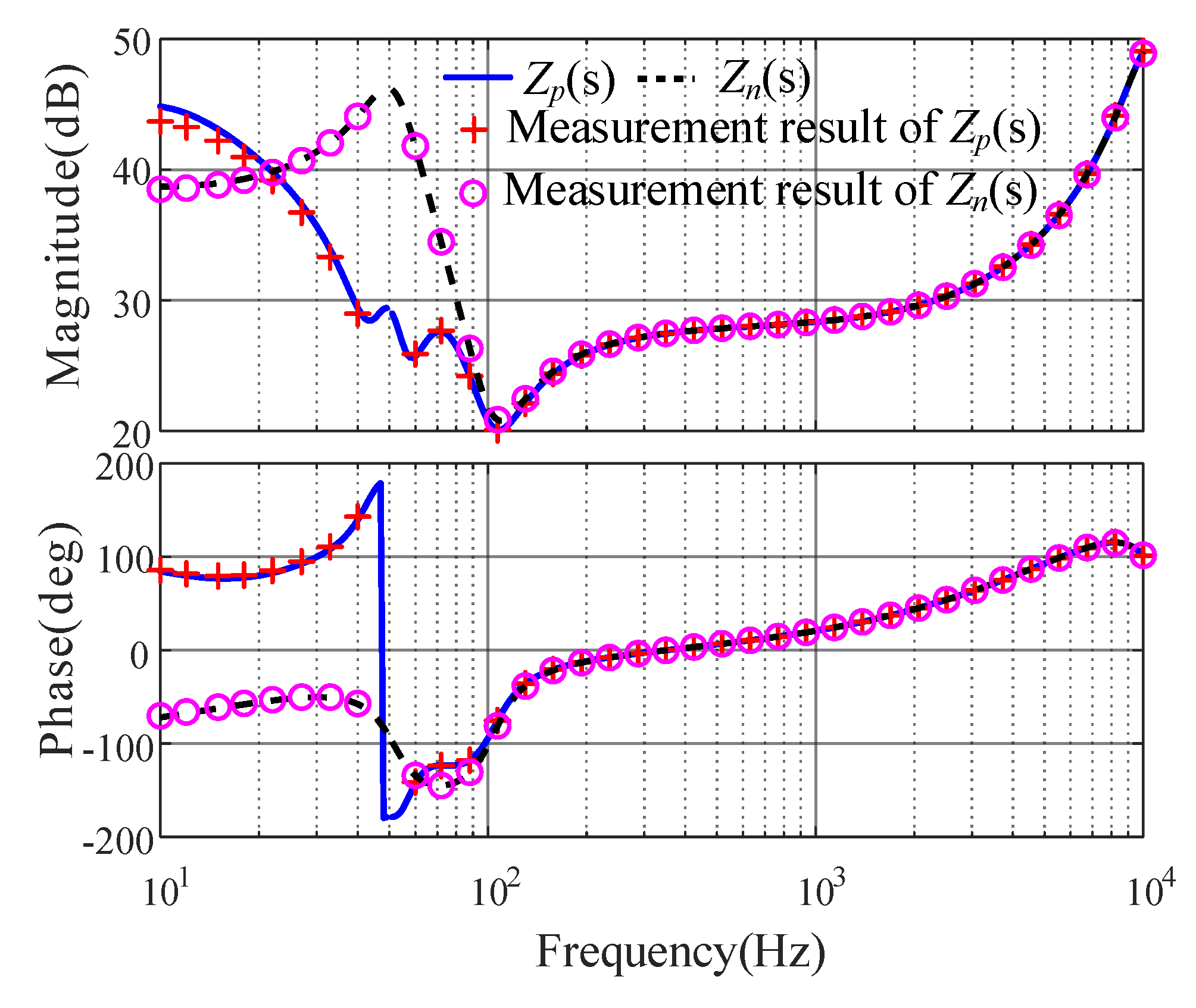
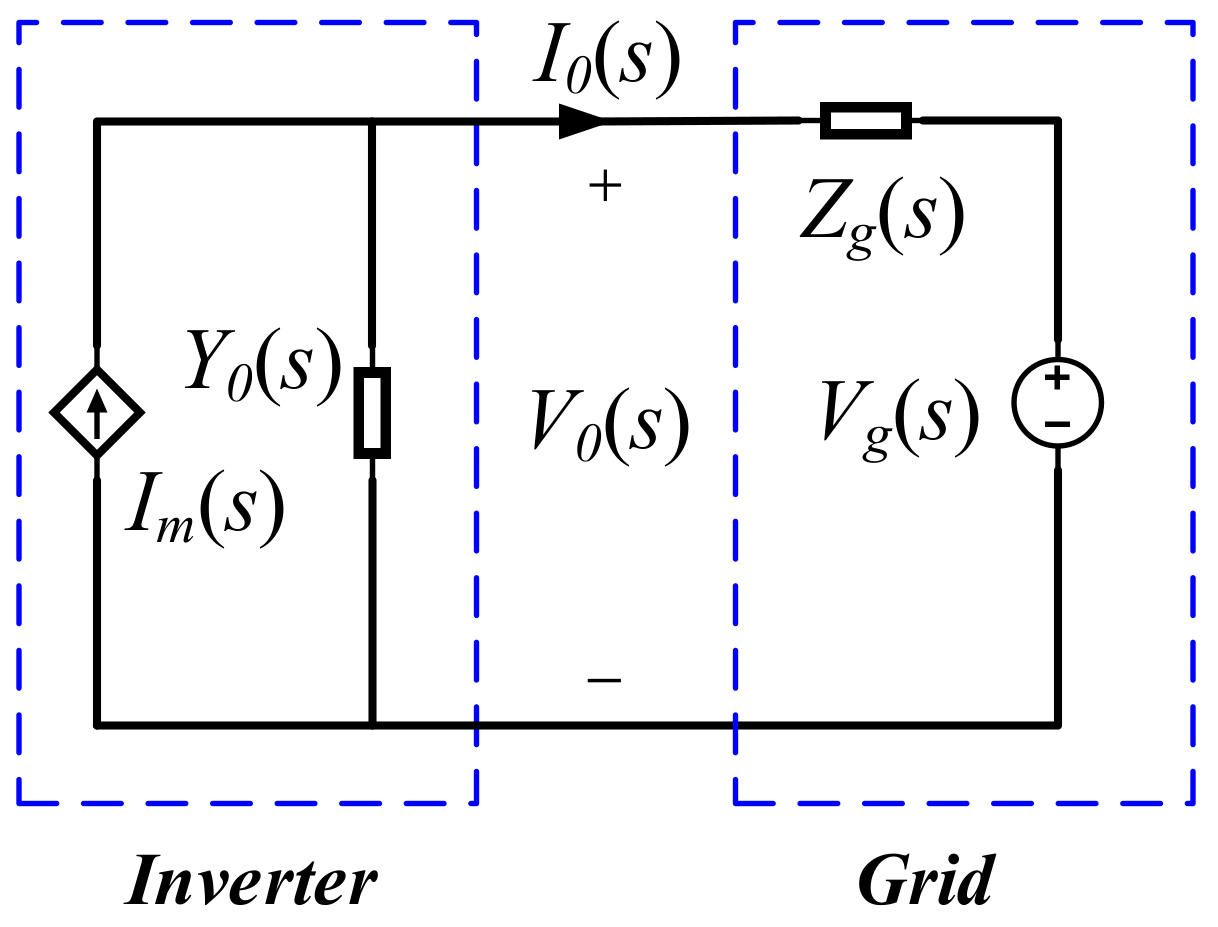


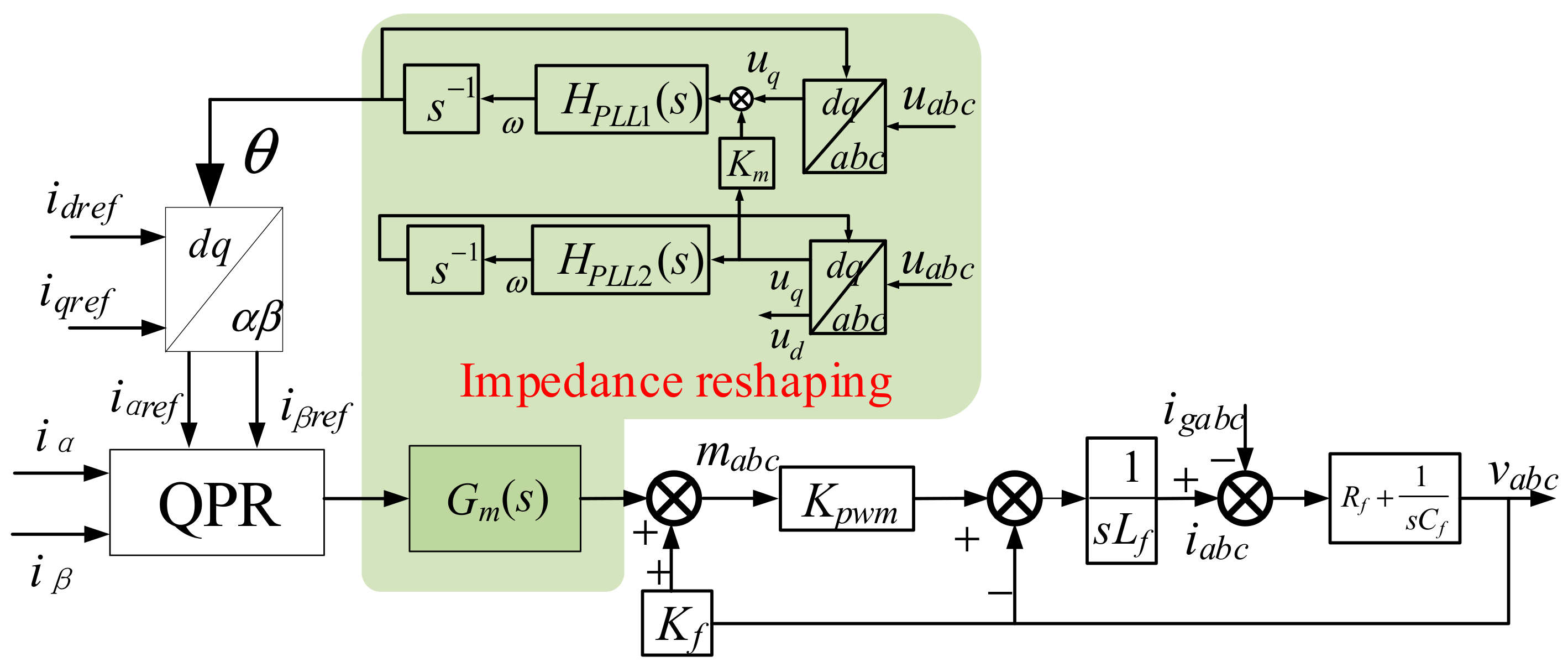
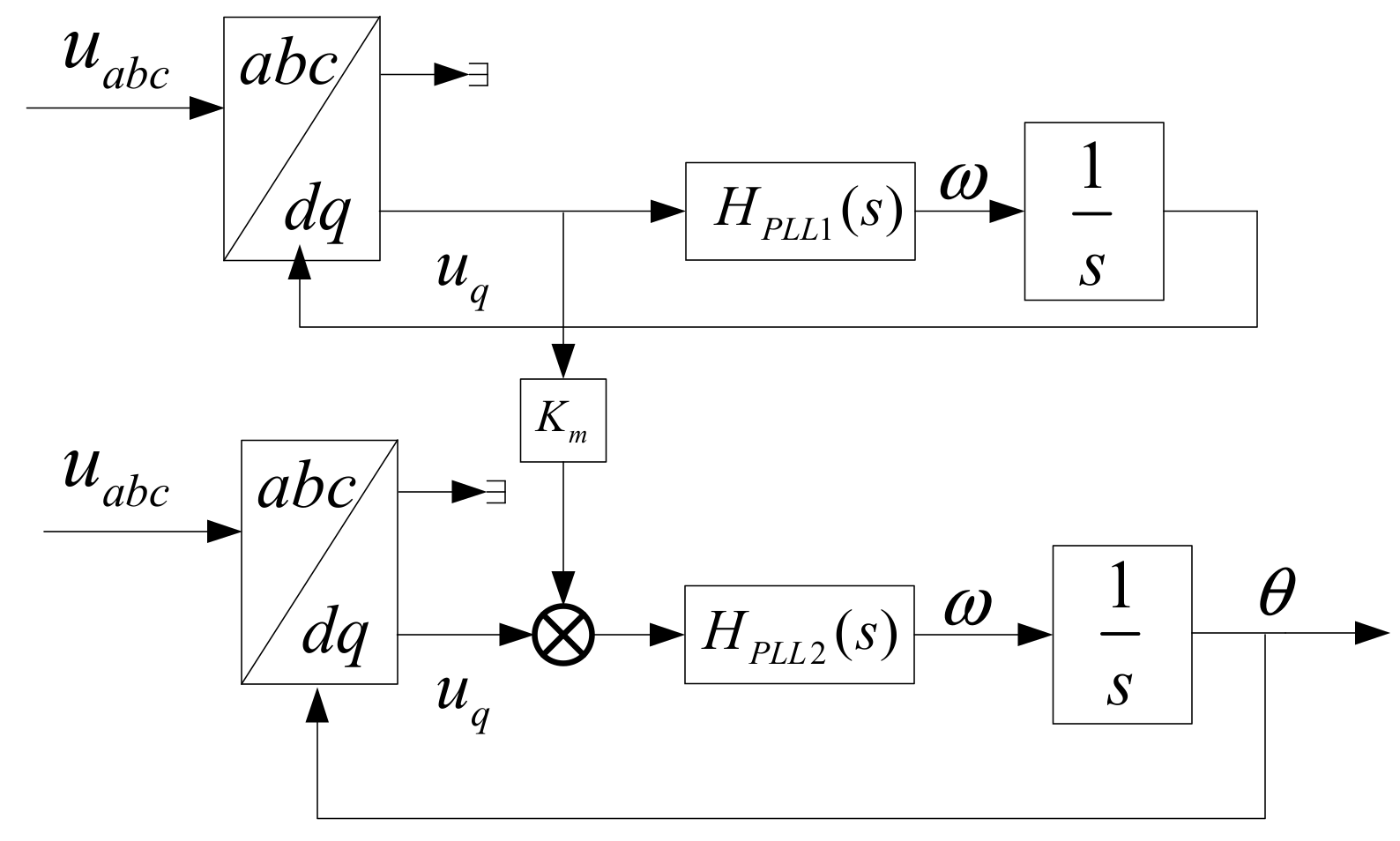



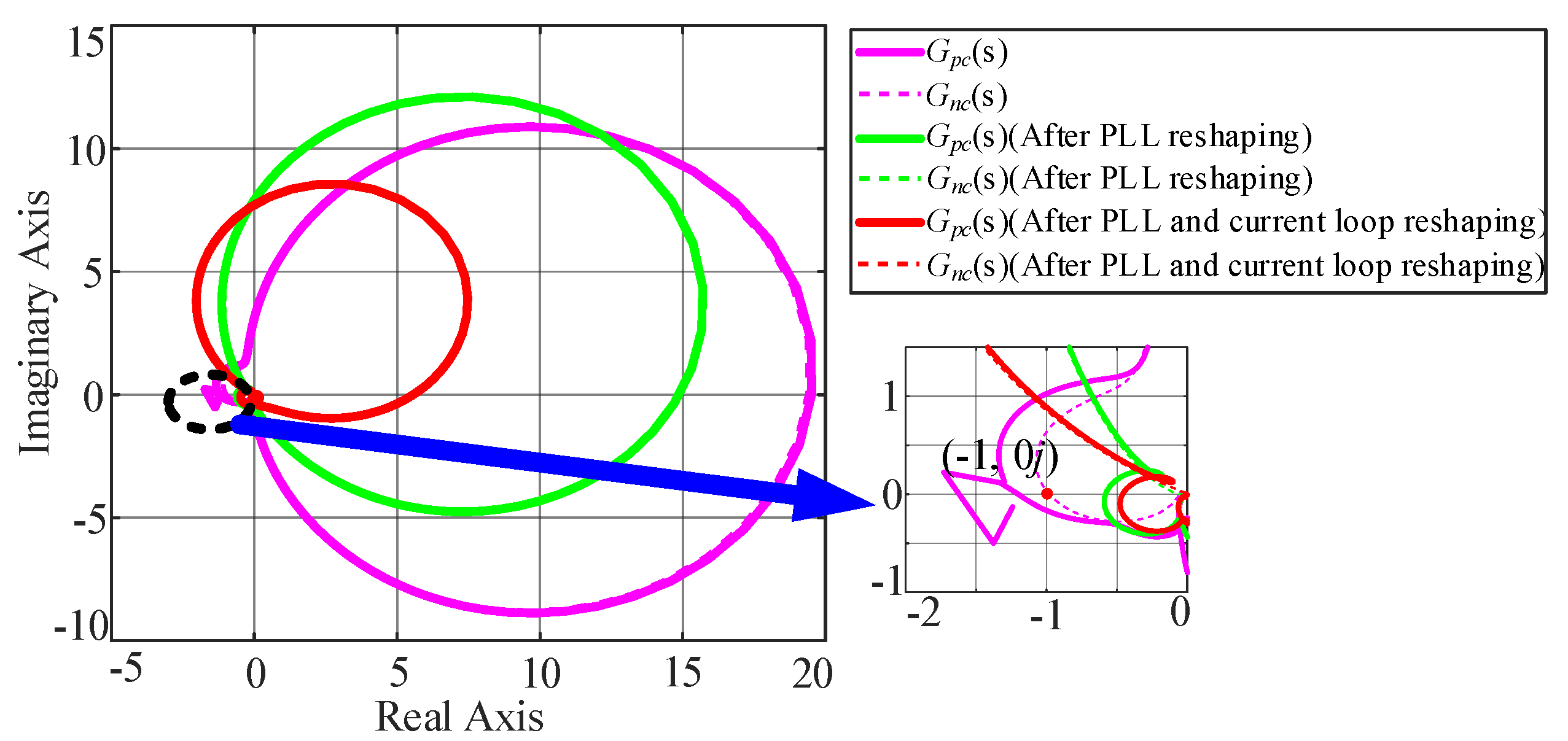
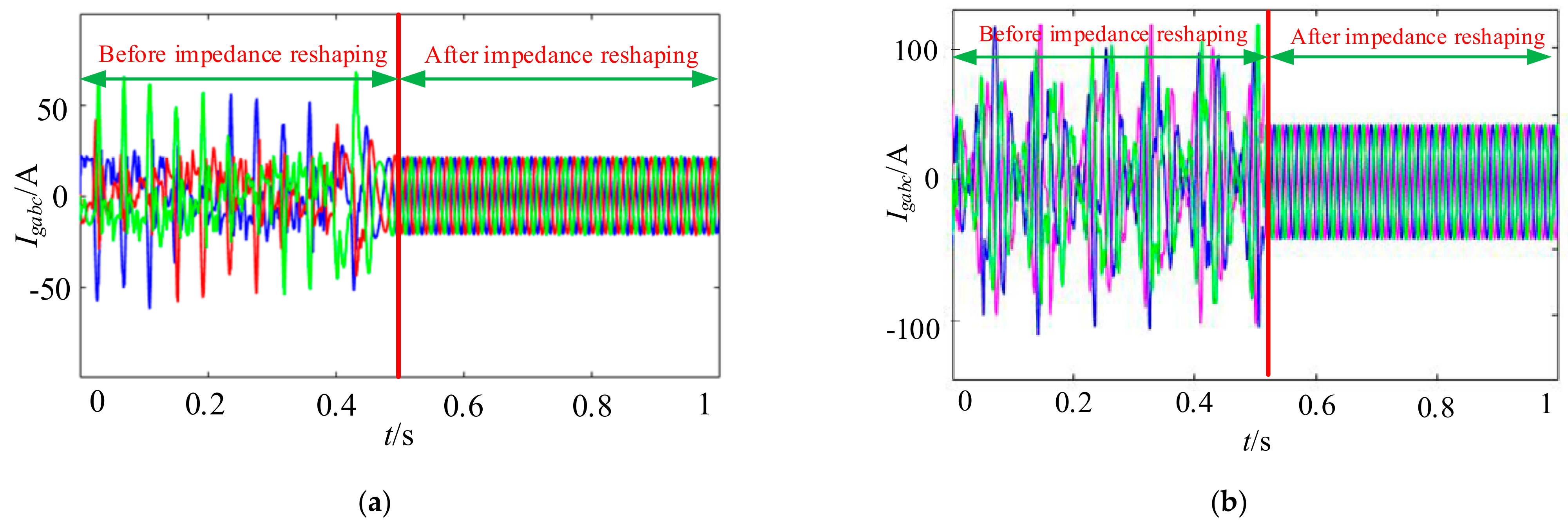
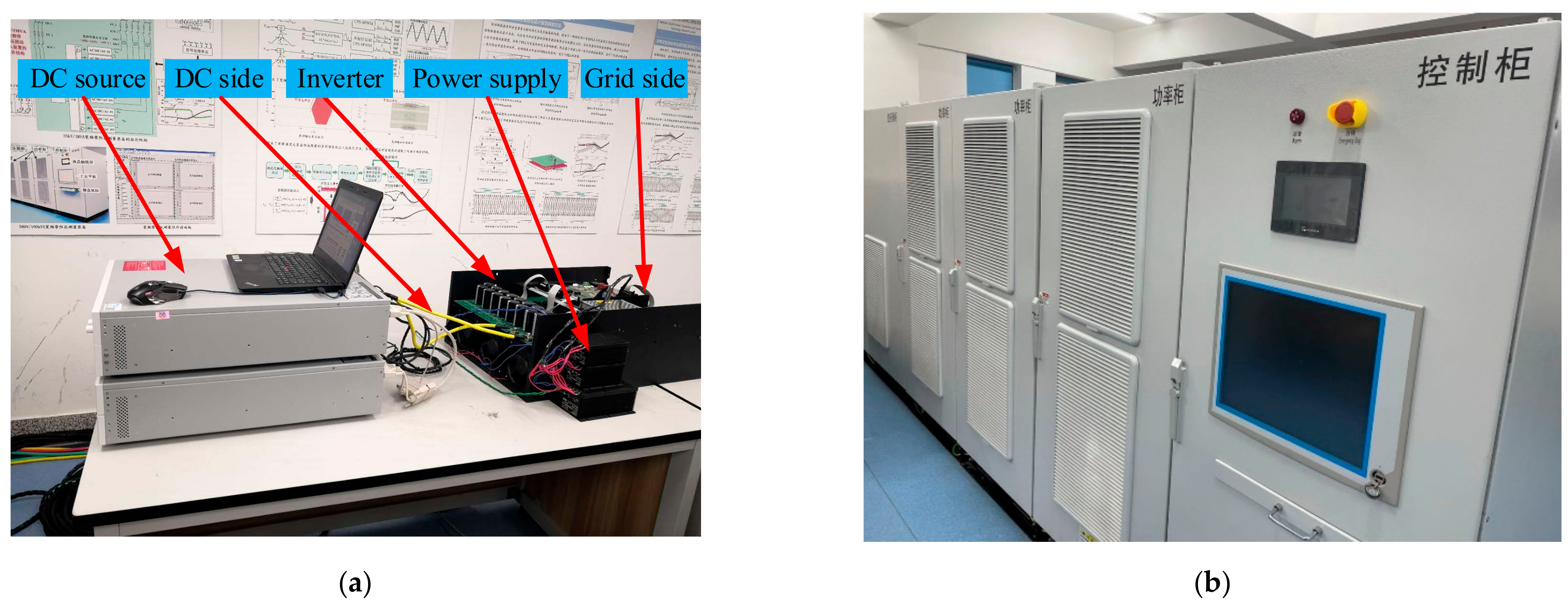
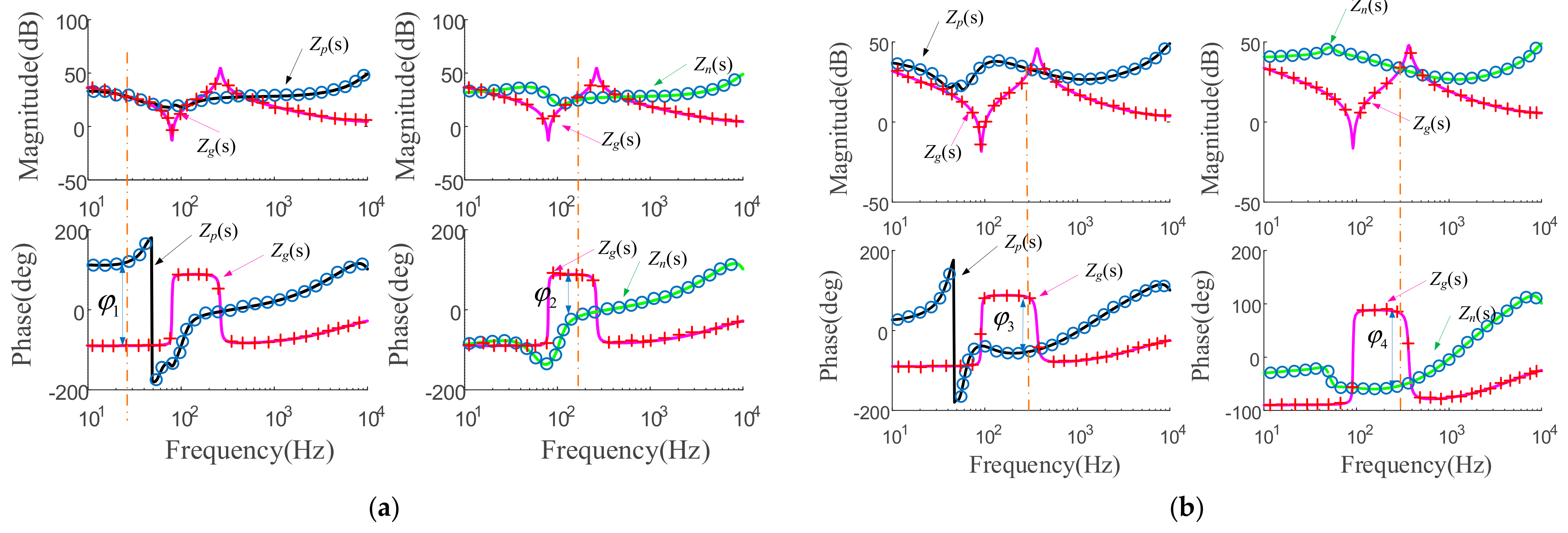




| Parameters/Unit | Value | Parameters/Unit | Value |
|---|---|---|---|
| Lf (mH) | 3 | Cg (F) | 0.0013 |
| Cf (μF) | 22 | ωc (rad/s) | 5 |
| Rf (Ω) | 2.87 | ωg (rad/s) | 100π |
| kp_PLL | 0.2659 | Lg (mH) | 15 |
| ki_PLL | 10.9988 | Rg (Ω) | 0.2 |
| kp | 3 | Kf | 1/350 |
| kr | 4 | vdc (V) | 700 |
| V1 (V) | 311 | Tv (μs) | 50 |
| I1 (A) | 21.43 | Ti (μs) | 50 |
| f1 (Hz) | 50 | fs (kHz) | 10 |
| Case | Implementation Form |
|---|---|
| Case A | Without the impedance reshaping when SCL = 100% |
| Case B | With the impedance reshaping when SCL = 100% |
| Case C | Without the impedance reshaping when SCL = 50% |
| Case D | With the impedance reshaping when SCL = 50% |
Publisher’s Note: MDPI stays neutral with regard to jurisdictional claims in published maps and institutional affiliations. |
© 2021 by the authors. Licensee MDPI, Basel, Switzerland. This article is an open access article distributed under the terms and conditions of the Creative Commons Attribution (CC BY) license (https://creativecommons.org/licenses/by/4.0/).
Share and Cite
Wang, H.; Chen, Y.; Wu, W.; Liao, S.; Wang, Z.; Li, G.; Xie, Z.; Guo, J. Impedance Reshaping Control Strategy for Improving Resonance Suppression Performance of a Series-Compensated Grid-Connected System. Energies 2021, 14, 2844. https://doi.org/10.3390/en14102844
Wang H, Chen Y, Wu W, Liao S, Wang Z, Li G, Xie Z, Guo J. Impedance Reshaping Control Strategy for Improving Resonance Suppression Performance of a Series-Compensated Grid-Connected System. Energies. 2021; 14(10):2844. https://doi.org/10.3390/en14102844
Chicago/Turabian StyleWang, Haining, Yandong Chen, Wenhua Wu, Shuhan Liao, Zili Wang, Gaoxiang Li, Zhiwei Xie, and Jian Guo. 2021. "Impedance Reshaping Control Strategy for Improving Resonance Suppression Performance of a Series-Compensated Grid-Connected System" Energies 14, no. 10: 2844. https://doi.org/10.3390/en14102844
APA StyleWang, H., Chen, Y., Wu, W., Liao, S., Wang, Z., Li, G., Xie, Z., & Guo, J. (2021). Impedance Reshaping Control Strategy for Improving Resonance Suppression Performance of a Series-Compensated Grid-Connected System. Energies, 14(10), 2844. https://doi.org/10.3390/en14102844






